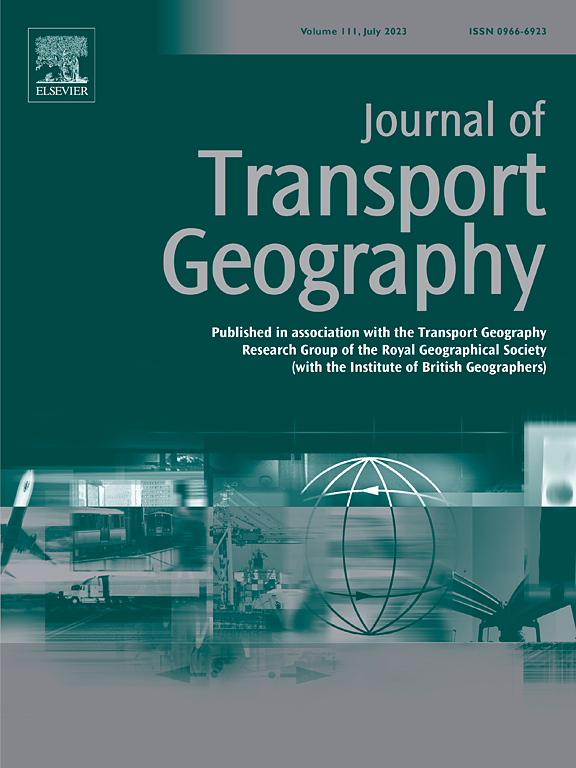可步行性对步行行为的影响如何随时间变化?中国深圳的研究
IF 5.7
2区 工程技术
Q1 ECONOMICS
引用次数: 0
摘要
了解可步行性和步行行为之间的关系对于设计步行友好型城市至关重要。本研究探讨了深圳市步行性对步行行为影响的时空格局。为了评估时间方面,我们将一天的时间分为五个时段:AM高峰前,AM高峰期间,AM和PM高峰之间,PM高峰期间和PM高峰之后。可步行性基于四种行人需求——安全性、便利性、连续性和吸引力——进行量化,并结合设施开放时间和来自街景图像的行人视觉因素。2021年,从六个月的手机数据中收集了超过17.5亿次步行旅行。我们通过机器学习和地理空间模型研究了步行性的相对重要性和对步行旅行的空间影响的时间动态。结果表明,在四种行人需求中,便利性排名最高。在AM高峰期间和AM - PM高峰之间,生活服务是最重要的因素。在其他三个时期,休闲服务的相对重要性排名最高。基于这些结果,我们提出了适合步行和包容性城市建设的时效性干预策略。本文章由计算机程序翻译,如有差异,请以英文原文为准。
How does the effect of walkability on walking behavior vary with the time of day? A study of Shenzhen, China
Understanding the relationship between walkability and walking behavior is essential for designing pedestrian-friendly cities. This study examines the spatiotemporal patterns of walkability's effects on walking behavior in Shenzhen, China. To assess temporal aspects, we divided the time of day into five periods: before the AM peak, during the AM peak, between the AM and PM peaks, during the PM peak, and after the PM peak. Walkability was quantified based on four pedestrian needs—safety, convenience, continuity, and attractiveness—and incorporated facility opening hours and pedestrian visual factors derived from street view imagery. Over 1.75 billion walking trips were collected from six months of mobile phone data in 2021. We examined the temporal dynamics of walkability's relative importance and spatial effects on walking trips through machine learning and geospatial models. The results show that convenience was ranked the highest among the four pedestrian needs. Living services were the most important element during the AM peak and between the AM and PM peaks. For the other three periods, leisure services were the highest-ranked factor in relative importance. Based on these results, we propose timing-specific intervention strategies for the building of walkable and inclusive cities.
求助全文
通过发布文献求助,成功后即可免费获取论文全文。
去求助
来源期刊

Journal of Transport Geography
Multiple-
CiteScore
11.50
自引率
11.50%
发文量
197
期刊介绍:
A major resurgence has occurred in transport geography in the wake of political and policy changes, huge transport infrastructure projects and responses to urban traffic congestion. The Journal of Transport Geography provides a central focus for developments in this rapidly expanding sub-discipline.
 求助内容:
求助内容: 应助结果提醒方式:
应助结果提醒方式:


